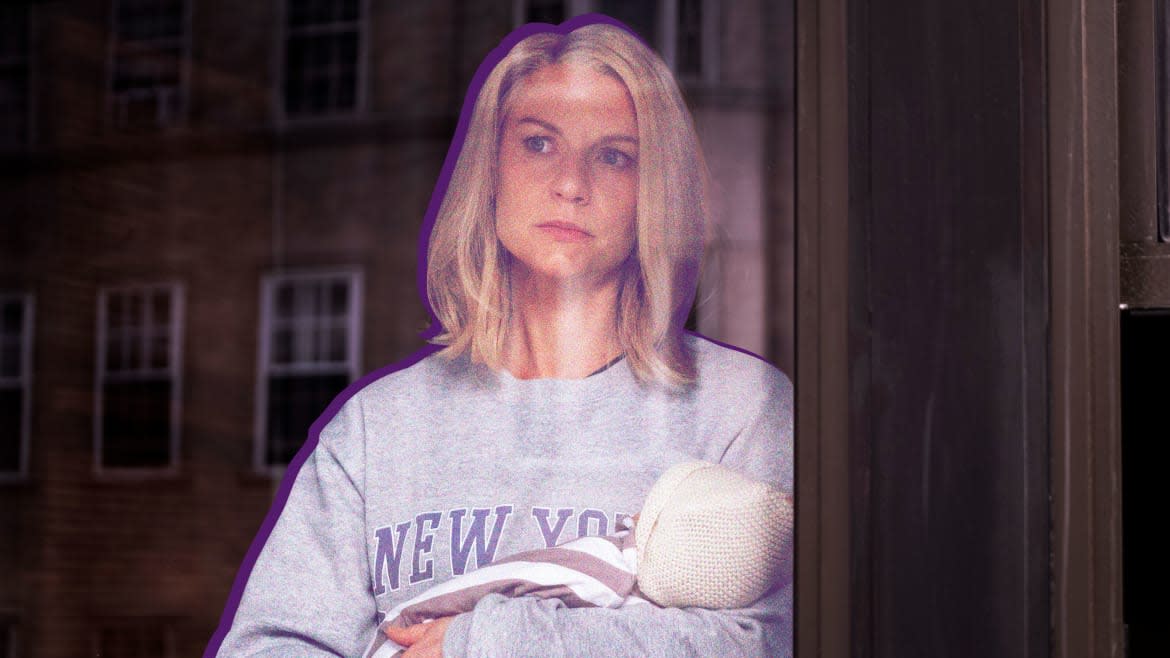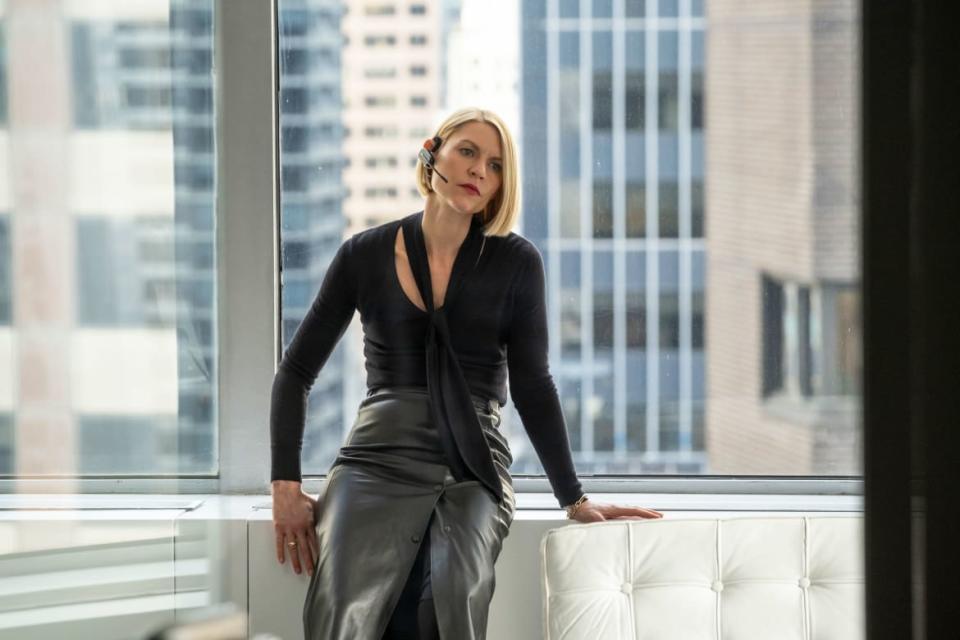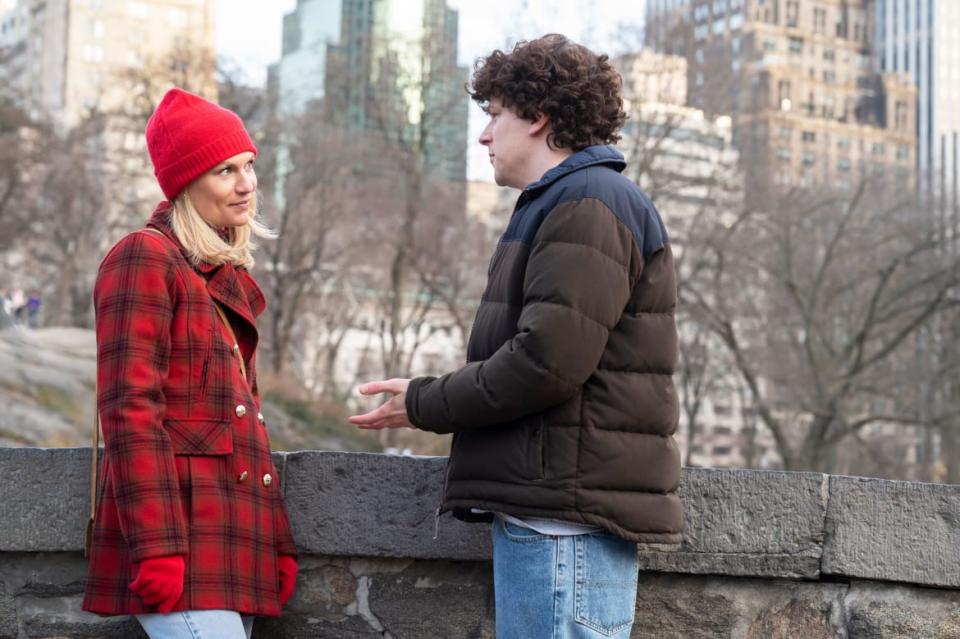‘Fleishman Is in Trouble’: How Claire Danes Pulled Off the Best Acting of the Year

For the last few weeks, Fleishman is in Trouble has been building up to a complete mental breakdown—one with tearful screams, blistering arguments, and boxes upon boxes of beef lo mein.
Valerie Faris and Jonathan Dayton were the perfect pair to shoot the breakdown of recent divorcee Rachel Fleishman (Claire Danes), in her tour de force performance in the latest episode of the Hulu series. The married couple—yes, quite a touch of irony, a happy duo working on a show delving into divorce—have experience in the area, having worked together on other breakdowns, including that of Paul Dano in Little Miss Sunshine and also Ruby Sparks.
This time, they gave Dano a break, instead focusing their emotional energy on Danes in the series based on Taffy Brodesser-Akner’s novel of the same name. The result is mind-blowing, one of the finest episodes of television released this year.
(Spoilers ahead for Episode 7, “Me Time,” of Fleishman is in Trouble)

We’ve spent the entire season learning all the reasons to hate Rachel Fleishman: She’s a work-obsessed, cheating, child-abandoning asshole. But that was all from her ex-husband Toby’s (Jesse Eisenberg) point of view. When his college pal Libby (Lizzy Caplan, who also narrates the show) spots Toby’s ex-wife on a bench, she finally gets the whole story of what led Rachel to break down, disappear, and leave her kids stranded with their smart-ass father after their contentious divorce.
“We really loved the idea of really getting to see her side of the story, and then her breakdown, which is a really interesting filmic challenge for us,” Faris says, speaking to The Daily Beast’s Obsessed over Zoom. “That’s what excited us about it—we’ve never done something quite like that, which allowed us to play with certain devices.”
The episode flashes back to Rachel’s early days with Toby, her trauma-filled childhood, and her post-divorce fling. But ultimately, we end up in a loop of mental destruction. Rachel loses track of time. She buries her phone at a wellness retreat. She’s left society completely, ordering the same beef lo mein takeout over and over again. (“I actually was sort of getting an urge for beef lo mein as we were shooting,” Faris says, “even though she's spitting it out.”)
‘Fleishman Is In Trouble’ Has Scandalized Me With Jesse Eisenberg’s Butt
“It was really hard to figure out: How do you portray a breakdown, and how do you portray this loss of a sense of time?” Dayton says. “I really credit Taffy with continually working at it, and then it finally hit her that she would create this loop in time. That was all we needed. There were much more extended versions of her losing it, and we kept wanting to think about: How can we distill that experience? A little goes a long way.”
But in order to get there, Faris and Dayton had to first figure out the unraveling of Rachel. They pushed Danes to understand her character’s complete loss of her grip on reality, all of the moments that triggered it—including, for example, the terrifying birth scene from Episode 3.
At the beginning of the season, Fleishman is in Trouble takes us back to the early days of the couple—back when they were happy, believe it or not. Before Toby had asked for a divorce, before Rachel disappeared from his life, before she had hundreds of boxes of beef lo mein, Rachel’s pain started in the delivery room. In the third episode, we see a doctor assaulting Rachel through Toby’s perspective. Now, we’re witnessing it through her eyes. It feels so different watching it through a first-person perspective.
‘Fleishman Is in Trouble’ Is the Best New TV Show of the Year
“It was very different; different lenses, different angles. Much more perspective. We used the portrait lens. She’s sort of the center of focus and it’s a little softer around her, zero in on her more,” Faris says. “It felt like two completely different moments, in a way.”
Dayton adds: “This was very much based on Taffy’s experience, so we had two people who were wrecks that day. Taffy was sobbing—it was very emotional for her,” he says, but also clarifies that she wasn’t emotional in the same way when shooting the same scene in Episode 3, when the moment was shot from Toby’s POV. “When we reshot the birth sequence, she was understandably emotional about it.”
This scene itself is harrowing, but there are two other moments in the episode that make it transcend. After the incident with the doctor, Rachel attends postpartum depression circles with other women. It doesn’t help. She opts for an assault survivors group, and at the first meeting, she breaks down in violent sobs, releasing her pain in shaky yelps as the women swarm to her side in support.
Danes cried her heart out in one take. Her face was so altered by the end of the initial shot, Faris and Dayton tell me, that it would’ve been impossible to wipe the tears and try again. The same thing happened when Danes filmed her scene at the wellness center. A wellness guide asks Rachel to scream out all of her pain. Suddenly, it’s as if the Earth has opened up inside of Rachel’s tiny body and must all escape at once.

“There was just silence after that scream,” Faris says. “I don’t know if I’ve ever experienced something like that, where it was so beyond what any of us expected. I don’t even know how she did it.”
Dayton adds that there was “no need to try anything else” after Danes unleashed the scream. The couple had instructed her to pour everything into one take, aiming to “protect” her by getting the take in one shot. And it worked.
“Claire is so facile,” Dayton says. “She can be there as herself, and then you roll, and she’ll go to these places. But when we would roll, she would require a minute, or a couple of minutes, to get to these places, quietly. We would just wait. And then she would signal, I’m ready.”
It’s impossible to talk about the episode without gushing over how gut-wrenching Claire Danes’ performance is. If one were to read over the transcript of this interview, they might be a little weirded out over how much all three of us spend talking about her greatness. But after you see the episode, you’ll understand.
‘Fleishman Is in Trouble’ Exposes the True NYC Party Scene
“Claire can cry, but it’s not a mechanical thing,” Dayton says. “It’s interesting with actors, you don’t really talk to them about where it is that they’re going, because it’s such a private thing. But she’s clearly going to some place that is deeply upsetting.”
Faris jumps in: “And she had to do it so many times,” she says, almost with a pang of guilt in her voice.
Worries about Rachel becoming “too unlikable” were never an issue. Even after this episode, in which the character truly bares all, it’s fine if the audience doesn’t like Rachel. The goal, Faris explains, was to make Rachel a sympathetic character, not defined by her workaholic characteristics or her brutal aggression towards Toby.
In fact, there was more story to Rachel’s character in the original drafts, including more about her upbringing. Arcs got cut for time, though, and Rachel’s childhood backstory was reduced to a few lines about the death of her mother and feeling outcast at school.
“And that’s where casting is just everything,” Dayton says. “Because with the universe that Claire brings, you don’t need to see an entire life lived. She gives that in her performance. Every time she’s on screen, you feel the depth of her life experience, so you don’t necessarily have to articulate every inch of the clock.”
Dayton and Faris also applaud Brodesser-Akner’s writing. Her connection to the material—for example, the birth sequence—brings everything to life. The couple rave over lines like, “I always liked you, I just thought you didn’t like me,” a gutting sentence Rachel says to Libby as if she were a dejected child. Danes’ delivery is even more eviscerating.
There is, however, one thing Faris and Dayton wanted to change from Brodesser-Akner’s book and screenplay. They weren’t so sure about including “Tonight, Tonight” by The Smashing Pumpkins in the soundtrack to Episode 3—because they actually shot the music video for the song back in 1996. It would have felt a little embarrassing, they thought. Eventually, they agreed.
“We have always loved putting the right music into a film scene,” Dayton says, explaining their hesitation. “We finally said, ‘OK, we’ll try it. But if we’re going to do it, we’re going to totally go for it. We’re going to milk it. Because we know that song.’ Ultimately, it was this fun symmetry to feature this thing that actually started our film career.”
They’re waiting to hear back from frontman Billy Corgan about his response to the needle drop. Hopefully, he enjoys it enough to continue through Episode 7, which will blow him away alongside the rest of us.
Get the Daily Beast's biggest scoops and scandals delivered right to your inbox. Sign up now.
Stay informed and gain unlimited access to the Daily Beast's unmatched reporting. Subscribe now.

 Yahoo News
Yahoo News 
